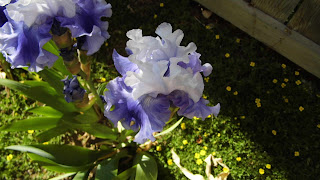This has been an extremely difficult season. Gardening in Colorado is not for sissies under the best of circumstances, but the last two seasons we have had virtually no spring. No spring means limited gestation of perennials, limited blooming and slow growth of annuals. Add to this excessive heat, draught, the wind that follows it, and insects, not to mention rabbits and other burrowing creatures that I have not seen before in my gardens, and you have a disappointing and frustrating season.
Still as the Summer begins to cool, and the Autumn whispers with the chirping of crickets after sunset, Goddess sends a message. "I am here and always will be,"the blooming rose attests. Two of the last beauties of a season that saw so little of the rose: VaVoom – bright orange; Scentimental (so named for her rich, true rose scent) – red and white.

















































